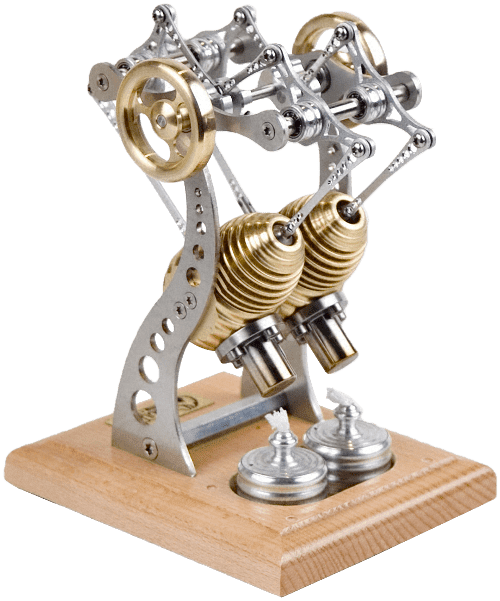Advantages and Disadvantages Stirling engine?
Advantages of Stirling engine :
- Very low mechanical power consumption.
- A large increase in efficiency with smaller variations in temperature.
- Low noise level (some designs produce virtually no sound).
- Can operate at high speeds with relatively small changes in temperature.
- It produces fewer vibrations.
- Simple construction; only a few moving parts are required (compared to conventional systems).
- Compact size for use onboard vessels or portable equipment (compared to conventional systems).
- High reliability due to simple design and lack of moving parts.
- These engines have been designed to be highly efficient by providing high performance and low fuel consumption with a small amount of power input.
- It is an ideal machine for powering devices in areas where there is a limited amount of fuel supply.
- They are also environmentally friendly because they produce low emissions during operation.
- The Stirling engine produces much less noise than traditional engines.
- It also works at low temperatures (down to -40 °C), so it can be used in places where there is a risk of damage from frost or snow.
Disadvantages of Stirling engine:
- Stirling engines have low power output and can only be used for small applications such as domestic heating or lighting small electric motors etc.
- It is large in size and high cost because it needs more space than reciprocating engines or turbines do.
- There will be higher maintenance costs due to its parts being made from stainless steel which needs periodic replacement unlike other metals like iron which will not require frequent replacement with time because they wear out naturally over time due to usage.
- It is Unreliable
- Low efficiency.
- Does not work well at high altitudes.
- Must be very carefully balanced.
- High-temperature limits for operation.
- It is hard to start when cold.
- Can’t use Air-cooled.
- It is hard to control spark length.
- The engine can only be operated with direct mechanical power
- Noise from a cooling system.
- Should be conscious at high speeds.
- The disadvantage of a Stirling engine is that it consumes a lot of energy and at the same time, produces a large amount of heat.
- Requires high maintenance costs.
- There may be friction losses.



